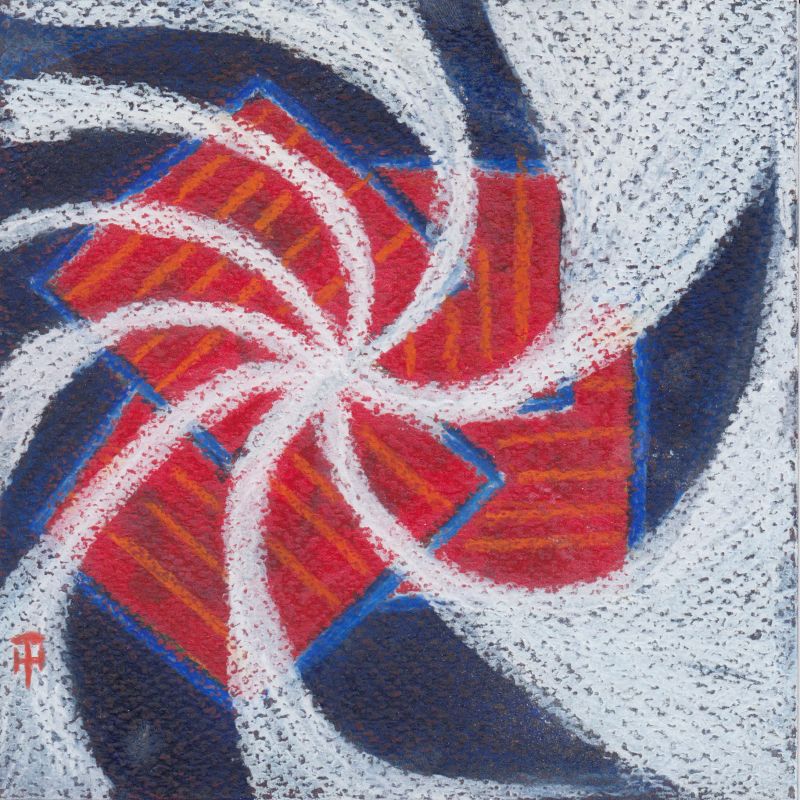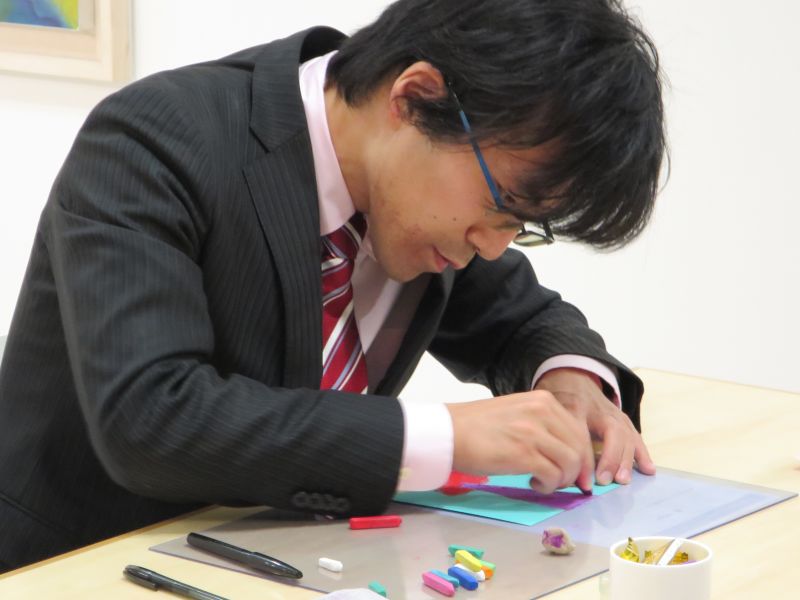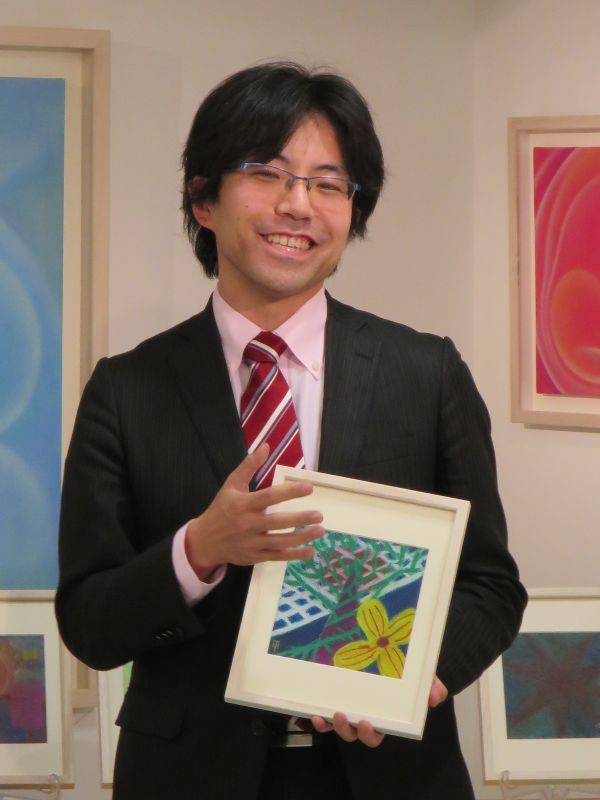 Captivated by the possibilities of drawing
Captivated by the possibilities of drawing
I recall reading the book, ‘Drawing with your right brain’ and how it gave me the idea of using drawing as a way to explore one’s inner self. I was curious to find out more about how drawing could have meaning for me, personally.
I started TOTSUKITOKA with the hope of finding out more about the possibilities presented by the act of drawing. When I took part in the first session it reminded me of my experiences with an improvisational theatre group I belong to. In improv theatre you’re using words and your body to express yourself, but I felt that the mental processes involved in drawing a picture were essentially the same. I found the process of drawing gave me immense pleasure.
Drawing as solo improvisation with a difference - the pictures endure beyond the experience
The improv theatre group I’ve been involved with over the years has had a big influence on my life. Improv isn’t something you do alone, part of the experience is about engaging with and responding to an idea that someone else puts out there. In contrast, with EGAKU it’s about creating and exploring your own world. There are moments in EGAKU when you spin your picture around, or you find yourself stuck, whatever you’re doing just isn’t working. I think there’s a parallel in improv when your interactions with other people give you some new insights about yourself. When I’m drawing a picture, there’s this moment when I glimpse something I’d never imagined before, so perhaps it’s a like solo improv in that sense.
One way in which it differs from improv is the fact that the pictures remain as artifacts. I find I experience the picture differently, seeing it when I’ve just finished drawing my picture and seeing it a little later when I feel calmer. What’s great is that this feeling of accomplishment stays with you after the creative experience ends. What’s more, whatever I was feeling at the time is also captured in the picture.
Unleashing the creative urge for self-expression
As I continue the practice of EGAKU, it surprised me to see how much my work has changed compared to my very first picture. I feel there’s been a visible change.
Overall, I felt the creative urge inside me getting bigger and bigger. In the beginning I was more focused on engaging deeply with the theme, but over time I became more interested in how much I could express my ideas, my thoughts.
I became more focused on giving full expression to what was happening inside me, my emotions. Improv is about creating a narrative, and it’s important to see the entire picture. But I think of EGAKU as being more about taking a fragment of the entire picture, you’re focused on squeezing as much as you can into that part. I think it offers a different perspective. Improv is about stepping back and seeing the whole picture. In EGAKU everything is compressed into the pictures.
Mixed feelings about how other people react to my work

 There was a point in time when I felt a gap between what I wanted to express and the comments I received from other participants about my work. It made me think that perhaps I was holding back, that I wasn’t giving enough. When I drew the work, “Throb” in my third session of TOTSUKITOKA I wanted to draw something that would put the viewer in a gloomy frame of mind rather than making them cheerful. So when someone commented that it was “pretty”, I became aware that I wasn't letting out my negative emotions. Regardless of the theme, this desire to give full expression whatever I’m feeling inside, including the negative parts of myself has always been there.
There was a point in time when I felt a gap between what I wanted to express and the comments I received from other participants about my work. It made me think that perhaps I was holding back, that I wasn’t giving enough. When I drew the work, “Throb” in my third session of TOTSUKITOKA I wanted to draw something that would put the viewer in a gloomy frame of mind rather than making them cheerful. So when someone commented that it was “pretty”, I became aware that I wasn't letting out my negative emotions. Regardless of the theme, this desire to give full expression whatever I’m feeling inside, including the negative parts of myself has always been there.
In order to bridge this gap between what other people saw and what I wanted to draw, I started wondering how I could express myself better. I was anxious about what other people were thinking and so I started drawing pictures that were faithfully depicting the images in my mind. But after trying this three times, I gave up. I realized this was getting me nowhere.
It struck me that unless I made the image I had in my mind the starting point rather than the end goal, it was impossible to go further. I’m pretty sure that’s how I was approaching it in the beginning. Finding myself stuck and wracked by doubt, the importance of using my ideas as a starting point finally dawned on me. You know you’ll eventually reach your goal, what’s matters is to give your full attention and apply yourself to the process.
Precious insights from the creative process
 In my 5th work, “Wound” I managed to realize the idea I had at the outset, and that itself was a satisfying process. However, when I was done I felt something was missing. I was haunted by doubts about whether I’d given it everything I had. There was a part of me that felt there was so much I’d experienced in the creative process that I wasn’t bringing these insights into play in my work. So from that point onwards I made the conscious decision to pause during the process and be open to changing my ideas midflow. Now that I think of it, I guess I was shifting my approach to EGAKU every 2 months.
In my 5th work, “Wound” I managed to realize the idea I had at the outset, and that itself was a satisfying process. However, when I was done I felt something was missing. I was haunted by doubts about whether I’d given it everything I had. There was a part of me that felt there was so much I’d experienced in the creative process that I wasn’t bringing these insights into play in my work. So from that point onwards I made the conscious decision to pause during the process and be open to changing my ideas midflow. Now that I think of it, I guess I was shifting my approach to EGAKU every 2 months.
 After I completed 10 months of TOTSUKITOKA, I attended another session and that feeling was still there – this desire to capture and draw the things that arise through the process. I think that’s how you discover something new about yourself.
After I completed 10 months of TOTSUKITOKA, I attended another session and that feeling was still there – this desire to capture and draw the things that arise through the process. I think that’s how you discover something new about yourself.
Greater confidence in what I say and do
With TOTSUKITOKA completed, recently I’ve been noticing changes going on inside me. I think it’s hard to say whether this is a direct result of drawing. I’ve noticed I struggle less to find the right words. Actually it’s not just what I say but I’m also a lot less indecisive in my actions.
At the same time, I think I’ve become better at calmly analyzing the impact my speech and actions have on those around me. In the past, that’s something I’d never really paid much attention to. Through my experience in EGAKU of drawing a picture and observing the reactions other participants have to my work, these days I find I can objectively observe the consequences of my actions.
For example, I remember there was one time someone said a comment I wrote about their picture was surprisingly perceptive. In the past I wouldn't have given their reaction that much thought. But now I’ve become more comfortable accepting that it’s a reflection of something that’s happening inside me. It’s not so much about self-esteem but perhaps more self-awareness. Self-esteem remains a theme for me.
 Creating a space for discovery
Creating a space for discovery
The experience of facilitating the groups at the EGAKU sessions made me realize I really care about the experience. I have this strong desire to make it a comfortable and safe space, a space for discovery.
This inspired me to start learning more about facilitation. I’m still learning and I’m not yet in a place where I can create an experience for other people, and I still don’t know which programs are good or which fits me best. Until I started learning about it I didn't have anyone I could share ideas with, so it’s been a great way to meet other people who are interested in thinking about these things.
As for future career plans, I’d love to get involved in something like EGAKU, something that allows me to create opportunities for people to reveal and give expression to their inner selves. I still don’t know if my interest lies in facilitation, program design or program coordination. I feel TOTSUKITOKA gave me a space to examine and clarify these ideas. I think self-expression is important for all for us. Self-expression is a way of understanding yourself better. It’s got me thinking that I’d like to create a space for people to have these ‘aha’ moments.
Art touches the core of our being
 One thing I’m really grateful for is the experience has helped me see that art ‘belongs’ to me - it’s my experience. Even if it’s someone else’s artwork, I can have a very personal experience of that work.
One thing I’m really grateful for is the experience has helped me see that art ‘belongs’ to me - it’s my experience. Even if it’s someone else’s artwork, I can have a very personal experience of that work.
It was important for me to realize that art touches the core of our being. So when I hear people talking about art as a luxury, I can’t help feeling there’s something wrong with that idea. Art is personal. Art experiences are available to us all. What I want to say to people who feel that art is some how out of their reach is that it’s ridiculous to define art in that way.
The great thing about TOTSUKITOKA is that you engage with a different theme every time. Now I’ve gone through all the themes and have a greater understanding of the personal significance of drawing, I think I’d like to draw pictures addressing themes that interest me personally. I’m curious to see what kind of pictures I end up creating. I now have a clearer sense of what this practice of drawing means to me, and it’s something I want to continue pursuing actively.
*This article is a translation of the original Japanese interview.